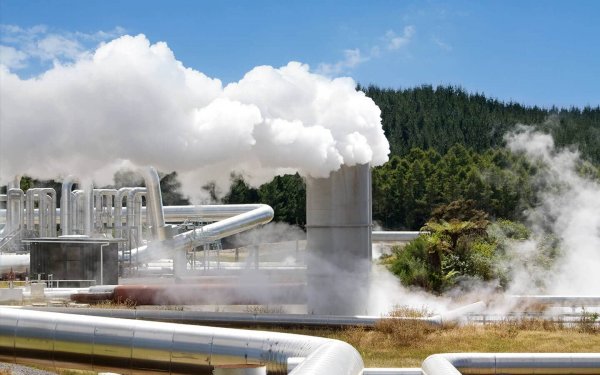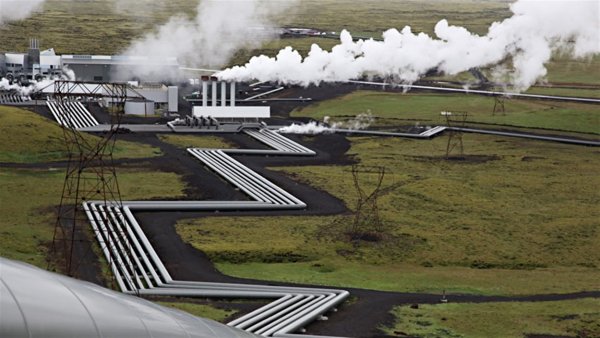Geothermal energy and its use, prospects for geothermal energy
There is enormous thermal energy inside the Earth. Estimates here are still quite different, but according to the most conservative estimates, if we limit ourselves to a depth of 3 km, then 8 x 1017 kJ of geothermal energy. At the same time, the scale of its real application in our country and around the world is insignificant. What is the issue here and what are the prospects for using geothermal energy?
Geothermal energy is the energy of the Earth's heat. Energy released from the Earth's natural heat is called geothermal energy. As an energy source, the heat of the Earth, combined with existing technologies, can supply humanity's needs for many, many years. And that's not even touching on the warmth that runs too deep, in areas hitherto unreachable.
For millions of years, this heat is released from the bowels of our planet, and the cooling rate of the core does not exceed 400 ° C per billion years! At the same time, the temperature of the Earth's core, according to various sources, is currently no lower than 6650 ° C and gradually decreases towards its surface. 42 trillion watts of heat is constantly radiated from the Earth, only 2% of which is in the crust.
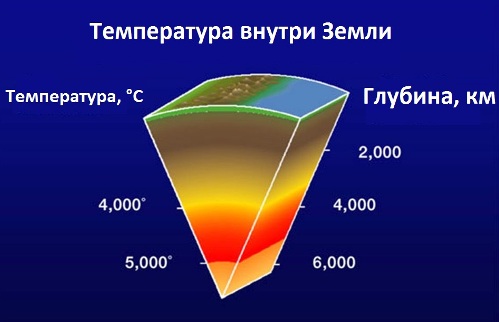
The internal thermal energy of the Earth from time to time manifests threateningly in the form of eruptions of thousands of volcanoes, earthquakes, movements of the earth's crust and other, less noticeable, but no less global, natural processes.
The scientific point of view about the causes of this phenomenon is that the origin of the Earth's heat is related to the continuous process of radioactive decay of uranium, thorium and potassium in the interior of the planet, as well as to the gravitational separation of matter at its core.
The granite layer of the Earth's crust, at a depth of 20,000 meters, is the main zone of radioactive decay of the continents, and for the oceans, the upper mantle is the most active layer. Scientists believe that on the continents, at a depth of about 10,000 meters, the temperature at the bottom of the crust is about 700 ° C, while in the oceans the temperature reaches only 200 ° C.
Two percent of the geothermal energy in the earth's crust is a constant 840 billion watts, and this is technologically accessible energy. The best places to extract this energy are areas near the edges of continental plates, where the crust is much thinner, and areas of seismic and volcanic activity—where the earth's heat is manifested very close to the surface.
Where and in what form does geothermal energy occur?
Currently, the development of geothermal energy is actively engaged in: the USA, Iceland, New Zealand, the Philippines, Italy, El Salvador, Hungary, Japan, Russia, Mexico, Kenya and other countries, where the heat from the bowels of the planet rises to the surface in the form of steam and hot water, going out, at temperatures reaching 300 ° C.
The famous geysers of Iceland and Kamchatka, as well as the famous Yellowstone National Park, located in the American states of Wyoming, Montana and Idaho, covering an area of almost 9,000 square kilometers, can be cited as vivid examples.
When talking about geothermal energy, it is very important to remember that it is mostly of low potential, that is, the temperature of the water or steam leaving the well is not high. And this significantly affects the efficiency of using such energy.
The fact is that for the production of electricity today it is economically expedient for the temperature of the coolant to be at least 150 ° C. In this case, it is sent directly to the turbine.
There are installations that use water at a lower temperature. In them, geothermal water heats the secondary coolant (for example, Freon), which has a low boiling point. The generated steam turns the turbine. But the capacity of such installations is small (10 — 100 kW) and therefore the cost of energy will be higher than in power plants using high temperature water.
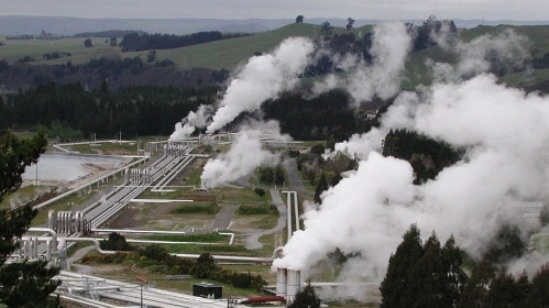 GeoPP in New Zealand
GeoPP in New Zealand
Geothermal deposits are porous rocks filled with hot water. They are essentially natural geothermal boilers.
But what if the water spent on the surface of the earth is not thrown away, but returned to the boiler? Creating a circulation system? In this case, not only the heat of the thermal water, but also the surrounding rocks will be used. Such a system will increase its total number by 4-5 times. The issue of environmental pollution with salt water is removed, as it returns to the underground horizon.
In the form of hot water or steam, the heat is delivered to the surface, where it is used either directly to heat buildings and houses, or to generate electricity. Also useful is the surface heat of the Earth, which is usually reached by drilling wells, where the gradient increases by 1 °C every 36 meters.
To absorb this heat, they use heat pumps… Hot water and steam are used to generate electricity and for direct heating, and the heat concentrated deep in the absence of water is converted into a useful form by heat pumps. The energy of magma and the heat that accumulates beneath volcanoes is extracted in similar ways.
In general, there are a number of standard methods for generating electricity in geothermal power plants, but again either directly or in a heat pump-like scheme.
In the simplest case, the steam is simply directed through a pipeline to the turbine of an electric generator. In a complex scheme, the steam is pre-purified so that dissolved substances do not destroy the pipes. In a mixed scheme, gases dissolved in water are eliminated after condensation of steam in water.
Finally, there is a binary scheme where another liquid with a low boiling point (heat exchanger scheme) acts as a coolant (to take heat and to turn the generator turbine).
The most promising are vacuum absorption heat pumps with water and lithium chloride. The former increase the temperature of the thermal water due to the consumption of electricity in the vacuum water pump.
Well water with a temperature of 60 — 90 ° C enters the vacuum evaporator. The generated steam is compressed by a turbocharger. The pressure is selected depending on the required coolant temperature.
If the water goes directly to the heating system, then it is 90 — 95 ° C, if to the heating networks, then 120 — 140 ° C. In the condenser, the condensed steam gives its heat to the water circulating in the city heating networks, heating systems and hot water .
What other options are there to increase the use of geothermal energy?
One of the directions is related to the use of largely depleted oil and gas deposits.
As you know, the production of this raw material in old fields is carried out by the method of water flooding, that is, water is pumped into the wells, which displaces oil and gas from the pores of the reservoir.
As the depletion progresses, the porous reservoirs are filled with water, which acquires the temperature of the surrounding rocks, and thus the deposits are transformed into a geothermal boiler, from which it is possible to simultaneously extract oil and obtain water for heating.
Of course, additional wells must be drilled and a circulation system created, but this will be much cheaper than developing a new geothermal field.
Another option is to extract heat from dry rocks by forming artificial permeable zones. The essence of the method is to create porosity using explosions in dry rocks.
Extraction of heat from such systems is carried out as follows: two wells are drilled at a certain distance from each other. Water is pumped into one, which, moving to the second through the formed pores and cracks, removes heat from the rocks, heats up and then rises to the surface.
Such experimental systems are already operating in the United States and England. In Los Alamos (USA), two wells — one with a depth of 2,700 m, and the other — 2,300 m, are connected by hydraulic fracturing and filled with circulating water heated to a temperature of 185 ° C. In England, in the Rosemenius quarry, water is heated to 80 °C.
Geothermal power plant
The heat of the planet as an energy resource
Near the Italian town of Larederello runs an electric railway powered by dry steam from a well. The system has been in operation since 1904.
Geyser fields in Japan and San Francisco are two other famous places in the world that also use dry hot steam to generate electricity. As for moist steam, its more extensive fields are in New Zealand, and smaller in area - in Japan, Russia, El Salvador, Mexico, Nicaragua.
If we consider geothermal heat as an energy resource, then its reserves are tens of billions of times higher than the annual energy consumption of mankind worldwide.
Just 1% of the thermal energy of the Earth's crust, taken from a depth of 10,000 meters, would be enough to overlap hundreds of times the reserves of fossil fuels, such as oil and gas, continuously produced by mankind, leading to irreversible depletion of the subsoil and of environmental pollution.
This is due to economic reasons. But geothermal power plants have very moderate carbon dioxide emissions, about 122 kg per megawatt hour of electricity generated, which is significantly less than emissions from fossil fuel power generation.
Industrial GeoPE and Geothermal Energy Prospects
The first industrial geoPE with a capacity of 7.5 MW was built in 1916 in Italy. Since then, invaluable experience has been accumulated.
As of 1975, the total installed capacity of GeoPP in the world was 1278 MW, and in 1990 it was already 7300 MW. The largest volumes of geothermal energy development are in the United States, Mexico, Japan, the Philippines, and Italy.
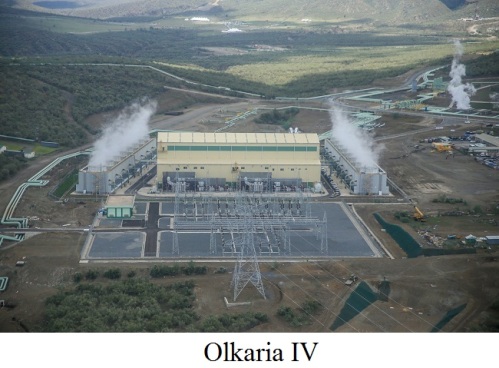
The first geoPE on the territory of the USSR was built in Kamchatka in 1966, its capacity is 12 MW.
Since 2003, the Mutnovskaya geographic power plant has been operating in Russia, the power of which is now 50 MW — it is the most powerful geoelectric power plant in Russia at the moment.
The largest GeoPP in the world is Olkaria IV in Kenya, with a capacity of 140 MW.
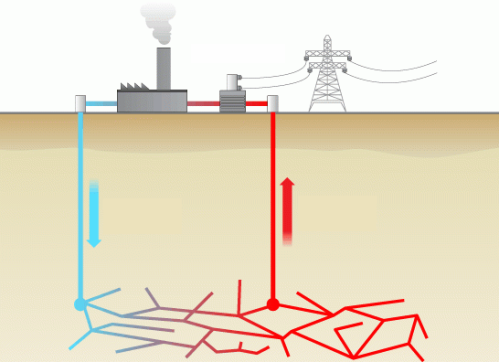
In the future, it is very likely that the thermal energy of magma will be used in those regions of the planet where it is not too deep below the surface of the Earth, as well as the thermal energy of heated crystalline rocks, when cold water is pumped into a drilled hole at a depth of several kilometers and the hot water is returned to the surface or steam, after which they get heating or generate electricity.
The question arises - why are there currently so few completed projects using geothermal energy? First of all, because they are located in favorable places, where the water either pours on the surface of the earth, or is located very shallowly. In such cases, it is not necessary to drill deep wells, which are the most expensive part of geothermal energy development.
The use of thermal waters for heat supply is much greater than for the production of electricity, but they are still small and do not play a significant role in the energy sector.
GThermal energy is only taking the first steps and current research, experimental-industrial work should give an answer for the scale of its further development.

